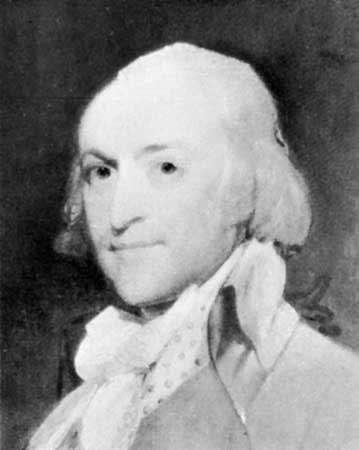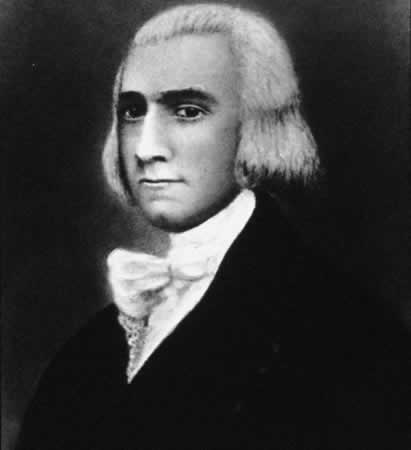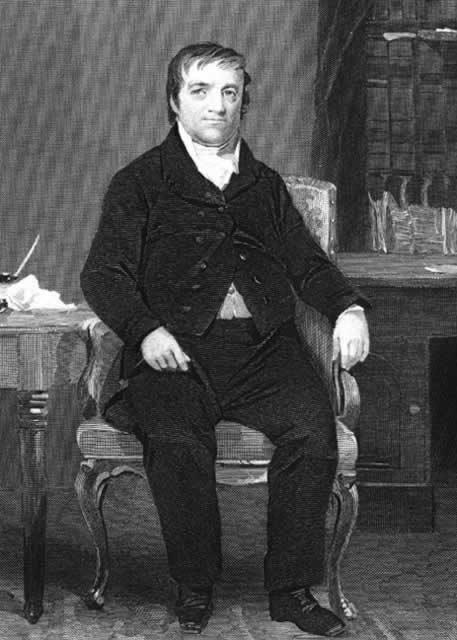Think that you may own a portrait of John Jacob Astor? We identify, appraise and issue Certificates of Authenticity (COA) for all portraits of John Astor.

Portrait of John Astor, Detail of a Painting by Gilbert Stuart, 1794
John Jacob Astor was the first prominent member of the Astor family and the first millionaire in the United States. He was the creator of the first trust in America, from which he made his fortune in fur trading, real estate, and opium.

Enter Portrait of John Astor, Artist Unknown
From humble origins in Germany, he emigrated to London and then to America following the American Revolutionary War. He built a fur-trading empire that extended to the Great Lakes region and Canada, and later expanded into the American West and Pacific coast. In the early 1800's he diversified into New York City real estate and later became a famed patron of the arts.

Seated Portrait, Artist Unknown
At the time of his death in 1848, Astor was the wealthiest person in the United States, leaving an estate estimated to be worth at least 20 million dollars; according to the latest Forbes rankings, he would be worth $110 billion in 2007 US Dollars, making him the fourth wealthiest person in American history.
Born in Walldorf, near Heidelberg in the old Palatinate which became part of Baden during the 19th century, Germany (currently in the Rhein-Neckar district), his father (Johann Jacob Astor) was a butcher, and he learned English in London while working for his brother, George Astor, manufacturing musical instruments.
Astor arrived in the United States in March 1784 just after the end of the Revolutionary War. He traded furs with Indians and then he started a fur goods shop in New York City in the late 1780s.
Astor took advantage of the Jay Treaty between Great Britain and the United States in 1794 which opened new markets in Canada and the Great Lakes region. By 1800 he had amassed almost a quarter of a million dollars, and had become one of the leading figures in the fur trade. In 1800, following the example of the "Empress of China", the first American trading vessel to China, Astor traded furs, teas and sandalwood with Canton in China, and greatly benefited from it. The Embargo Act from Thomas Jefferson in 1807, however, disrupted his import/export business. With the permission of President Jefferson, Astor established the American Fur Company on April 6, 1808. He later formed subsidiaries: the Pacific Fur Company, and the Southwest Fur Company (in which Canadians had a part), in order to control fur trading in the Columbia River and Great Lakes area.
The Columbia River trading post at Fort Astoria (established in April 1811) was the first United States community on the Pacific coast. He financed the overland Astor Expedition in 1810-12 to reach the outpost. Members of the expedition were to discover South Pass through which hundreds of thousands settlers on the Oregon, California and Mormon trails passed through the Rocky Mountains.
His fur trading ventures were disrupted once again when the British captured his trading posts during the War of 1812, but rebounded in 1817 after the U.S. Congress passed a protectionist law that barred foreign traders from U.S. Territories. The American Fur Company once again came to dominate trading in the area around the Great Lakes. In 1822, Astor established the Astor House on Mackinac Island as headquarters for the reformed American Fur Company, making the island a metropolis of the fur trade. A lengthy description based on documents, diaries etc. was given by Washington Irving in his travelogue Astoria.
In 1802, Astor purchased what remained of a ninety-nine year lease from Aaron Burr for $62,500. At the time, Burr was serving as vice president under Thomas Jefferson and was desperately short on cash. The lease was to run until May 1, 1866. Astor began subdividing the land into nearly 250 lots and subleased them. His conditions were that the tenant could do whatever they wish with the lots for twenty-one years, after which they must renew the lease or Astor would take back the lot.
In the 1830s, John Jacob Astor figured that the next big boom would be in the build-up of New York, which would soon emerge as one of the world's greatest cities. Astor withdrew from the American Fur Company, as well as all his other ventures, and invested all his proceeds on buying and developing large tracts of land, focusing solely on Manhattan real estate. Foreseeing the rapid growth northward on Manhattan Island, Astor purchased more and more land out beyond the current city limits. Astor rarely built on his land, and instead let others pay rent to use it.
After retiring from his business, Astor spent the rest of his life as a patron of culture. He supported the famous ornithologist John James Audubon, the poet/writer Edgar Allan Poe, and the presidential campaign of Henry Clay. At the time of his death in 1848, Astor was the wealthiest person in the United States, leaving an estate estimated to be worth at least 20 million dollars. In his will, he gave orders to build the Astor Library for the New York public (later consolidated with other libraries to form New York Public Library), as well as a poorhouse in his German hometown, Walldorf. As a symbol of the earliest fortunes in New York, John Jacob Astor is mentioned in Herman Melville's great novella "Bartleby the Scrivener".
Astor left the bulk of his fortune to his second son, William Backhouse Astor Sr. His eldest son, John Jacob II, had a mentally disability and therefore was ineligible to receive the inheritance, although the family continued to care for him.
John Jacob Astor is interred in the Trinity Churchyard Cemetery in the New York City borough of Manhattan. The famous pair of marble lions that sit by the stairs of The New York Public Library at Fifth Avenue and 42nd Street were originally named Leo Astor and Leo Lenox, after Astor and James Lenox, who founded the library. Then they were called Lord Astor and Lady Lenox (both lions are males), before being given the names Patience and Fortitude by Mayor Fiorello LaGuardia during the Great Depression.One of the most peculiar things about John Jacob Astor is in fact the lack of portraits in existence bearing his likeness. At the time of his death, he was one of the richest men in America, if not THE richest. He was the founder of the state of Oregon and many cities (Astoria) are named for him. This leads one to wonder why so few paintings were created of this great explorer. The very wealthy loved to have their portraits made, so why so few of Astor? Astor had a large family and sired many children, so perhaps portraits of his have made their way through the family tree; perhaps his likeness will even turn up in a group portrait somewhere. Only time will tell, but one thing is for certain; there must be more images of Astor unknown and otherwise unauthenticated.
Still wondering about a portrait in your family collection? Contact us... it could be a portrait of John Astor.
